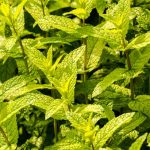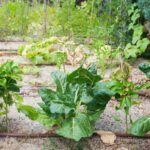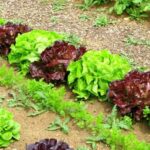Are you interested in starting a vegetable garden in Texas? Texas vegetable gardening presents unique challenges and opportunities due to the state’s diverse climate, soil, and growing conditions. From the scorching heat to occasional droughts, it takes careful consideration to successfully grow vegetables in the Lone Star State. In this article, we’ll discuss the specific factors that make Texas gardening different from other regions and provide valuable tips and resources for creating your own thriving Texas vegetable garden.
The climate and soil in Texas vary greatly from region to region, posing both benefits and challenges for vegetable gardening. Whether you’re dealing with the heat of West Texas or the humidity of Houston, understanding how these factors impact which vegetables thrive is crucial. We will also address common issues faced by Texas gardeners, such as managing pests and conserving water during dry periods. By acknowledging these distinct environmental factors, you can better prepare for a successful growing season.
Additionally, we’ll explore some of the best vegetables to grow in Texas. From tomatoes and peppers to okra and squash, there are plenty of options that are well-suited to the Texas climate. We’ll provide insights into when and how to plant these vegetables for optimal growth and yield.
Furthermore, we’ll discuss essential tools specifically suited for Texas vegetable gardening and how they can help you overcome the challenges of the Texan environment. With this information, you’ll be equipped to start your own successful Texas vegetable garden and enjoy a bountiful harvest throughout the year.
Best Vegetables to Grow in Texas
When it comes to Texas vegetable gardening, choosing the right vegetables to grow is crucial for a successful and bountiful harvest. The unique climate and soil conditions in Texas can make it challenging to grow certain types of vegetables, but there are some that thrive in this environment. Below are some of the best vegetables to grow in Texas, along with tips for growing each specific vegetable successfully.
Tomatoes
Tomatoes are a favorite among Texas gardeners due to their versatility and ability to thrive in the state’s climate. For best results, choose varieties that have been specifically bred for hot or humid conditions, such as ‘Solar Fire,’ ‘Phoenix,’ or ‘Solar Set.’ Be sure to plant them in a location that receives plenty of sunlight and provide adequate support for the plants as they grow.
Peppers
Peppers, whether sweet or spicy, also do well in Texas vegetable gardens. Varieties like bell peppers, jalapenos, and habaneros flourish in the warmth of Texas and can be prolific producers if given the right care. Plant peppers in well-draining soil and ensure they receive plenty of water, especially during hot summer months.
Squash
Both summer and winter squash varieties are excellent choices for Texas gardens. Summer squash like zucchini and yellow crookneck thrive in the heat, while winter squashes such as butternut and acorn can be stored for months after harvest. Just be sure to give them plenty of space to sprawl and keep an eye out for pests that may target squash plants.
By focusing on these resilient vegetables, Texas gardeners can enjoy a fruitful harvest despite the challenges posed by the state’s unique climate and soil conditions. With proper care and attention, these vegetables can yield an abundance of fresh produce for gardeners to enjoy throughout the growing season.
Essential Tools for Texas Vegetable Gardening
When it comes to successful Texas vegetable gardening, having the right tools is essential. The unique climate and soil conditions in Texas present their own set of challenges, so it’s important to have the appropriate tools to ensure a bountiful harvest.
Some of the must-have tools for Texas vegetable gardening include high-quality garden hose, shovel, rake, hand trowel, pruners, and a sturdy wheelbarrow. These tools are essential for tasks such as watering, digging, weeding, pruning, and transporting soil and plants.
One specific brand that comes highly recommended for Texas vegetable gardening is Fiskars. Their durable and ergonomic garden tools are designed to withstand the heat and rugged conditions often experienced in Texas. Another highly regarded brand is Dramm, known for their high-performance watering equipment such as hoses and nozzles that can withstand the hot Texas sun.
In addition to traditional gardening tools, consider investing in a soaker hose or drip irrigation system to ensure efficient water delivery to your plants while conserving water – an important consideration in the often dry Texas climate. These tools will help you maintain a healthy and thriving garden while minimizing water waste.
Overall, having the right tools can make a significant difference in the success of your Texas vegetable garden. Make sure to invest in high-quality, durable tools that are suitable for the unique conditions of Texas. With the right equipment at your disposal, you’ll be well-equipped to tackle any challenges that may arise during the growing season.
| Tool | Recommended Brand |
|---|---|
| Garden Hose | Fiskars |
| Shovel | Fiskars |
| Rake | Fiskars |
Texas-Specific Gardening Tips
When it comes to Texas vegetable gardening, there are a few specific tips and tricks that can help gardeners navigate the unique challenges presented by the Texas climate. From scorching heat to occasional droughts, Texas gardeners need to be prepared for these factors and implement strategies to ensure successful yields. Here are some Texas-specific gardening tips to help you make the most of your vegetable garden in the Lone Star State:
- Select heat-tolerant varieties: With the hot Texas weather, it’s essential to choose vegetable varieties that can withstand high temperatures. Opt for heat-tolerant plants such as okra, peppers, tomatoes, and eggplants. These vegetables thrive in the warm climate and will produce well throughout the summer months.
- Implement efficient watering techniques: Given the sporadic nature of rainfall in Texas, efficient watering is crucial for successful vegetable gardening. Consider installing a drip irrigation system or soaker hoses to deliver water directly to the roots of your plants while minimizing water waste. Mulching around your plants can also help retain moisture in the soil.
- Protect against pests and diseases: Insects and diseases can pose a significant challenge for Texas vegetable gardeners. Utilize natural pest control methods such as companion planting, row covers, and beneficial insect habitats to minimize pest damage. Additionally, practicing good garden hygiene and promptly removing any diseased plants can help prevent the spread of diseases.
- Provide shade and shelter: During periods of extreme heat, providing shade for your vegetables can be essential for their survival. Consider using shade cloth or planting taller crops on the west side of your garden to provide some relief from the intense afternoon sun.
By implementing these Texas-specific gardening tips, you can overcome the challenges posed by the unique climate of Texas and enjoy a successful and bountiful vegetable garden.
Planning and Preparing Your Texas Garden
When it comes to successful Texas vegetable gardening, proper planning and preparation are key. The unique climate and soil conditions in Texas present both challenges and opportunities for gardeners. By taking the time to plan and prepare your garden, you can set yourself up for a bountiful harvest.
Here are some essential steps to consider when planning and preparing your Texas vegetable garden:
1. Choosing the Right Location: Select a location that receives at least 6-8 hours of sunlight each day and has well-draining soil. Consider factors such as proximity to water source, wind protection, and access to tools and supplies.
2. Soil Preparation: Test your soil to determine its pH level and nutrient content. Amend the soil as needed with organic matter, such as compost or aged manure, to improve its fertility and structure.
3. Garden Layout: Plan the layout of your garden beds, taking into account the space required for each type of vegetable, as well as companion planting strategies. Consider using raised beds or container gardening for better control over soil quality and drainage.
By following these steps, you can ensure that your Texas vegetable garden is set up for success. Proper planning and preparation will help you overcome challenges such as heat, drought, and pests, allowing you to enjoy a productive and thriving garden.
Remember that every region within Texas may have slightly different conditions, so it’s important to tailor your planning and preparation efforts based on your specific local climate and soil characteristics.
Seasonal Gardening in Texas
Spring
In Texas, spring is a crucial time for vegetable gardening. As the weather begins to warm up, it’s essential to focus on planting heat-loving vegetables such as tomatoes, peppers, squash, and cucumbers. However, it’s also important to be mindful of potential late frost and to protect tender plants when necessary. With the right planning and preparation, spring gardening in Texas can lead to a bountiful harvest later in the year.
Summer
The summer months in Texas can be particularly challenging for vegetable gardeners due to the intense heat and potential drought conditions. During this time, it’s crucial to focus on proper watering techniques, mulching to help retain moisture, and providing shade for delicate plants. Additionally, choosing heat-resistant varieties of vegetables such as okra, sweet potatoes, and black-eyed peas can increase the chances of a successful summer harvest.
Fall
Fall is an ideal time for gardening in Texas as the temperatures begin to cool down. This is the perfect opportunity to plant cool-season vegetables such as lettuce, kale, broccoli, and carrots.
It’s also essential to take advantage of the milder weather for tasks such as soil preparation and improving garden infrastructure. By planning ahead and utilizing the optimal growing conditions of fall in Texas, gardeners can extend their growing season and continue harvesting fresh produce well into winter.
By understanding the unique climate and seasonal changes in Texas, vegetable gardeners can maximize their success by adapting their planting schedule and gardening techniques accordingly. Whether facing scorching summers or unpredictable winter frosts, being knowledgeable about seasonal gardening practices specific to Texas is key for a thriving vegetable garden.
Texas Vegetable Gardening Resources
When it comes to Texas vegetable gardening, having access to the right resources can make all the difference. Local gardening organizations, nurseries, and online forums are valuable sources of information and support for Texas gardeners. These resources can offer advice on specific challenges that Texas gardeners face, such as dealing with the intense heat and drought conditions, as well as pest management strategies tailored to the region.
In addition to local resources, there is a wealth of information available in books, websites, and social media accounts dedicated to Texas vegetable gardening. Books like “The Vegetable Gardener’s Bible” by Edward C. Smith provide in-depth guidance on growing vegetables in various climates, including Texas.
Websites such as the Texas A&M AgriLife Extension offer a wealth of research-based information on all aspects of gardening in Texas. Social media accounts run by experienced Texas gardeners can also be great sources of inspiration and knowledge-sharing.
For those who prefer in-person interactions and hands-on learning, attending gardening workshops or seminars offered by local nurseries or gardening organizations can be incredibly beneficial for Texas vegetable gardeners. These events often cover topics specific to the region and provide an opportunity to connect with other local gardeners who share similar challenges and successes.
| Resource | Description |
|---|---|
| Local Gardening Organizations | Provide advice on specific challenges faced by Texas gardeners |
| Websites like Texas A&M AgriLife Extension | Offer research-based information on gardening in Texas |
| Gardening Workshops/Seminars | Provide hands-on learning opportunities and connection with other local gardeners |
Success Stories From Texas Vegetable Gardeners
In conclusion, Texas vegetable gardening presents a unique set of challenges, from the scorching heat to the unpredictable weather and persistent pests. However, with the right knowledge and tools, it is possible to create a thriving garden in the Lone Star State. By selecting the best vegetables for the Texas climate, using essential tools, implementing Texas-specific gardening tips, planning and preparing the garden properly, and following seasonal gardening guidelines, success is within reach for Texas gardeners.
It’s important to remember that Texas vegetable gardening is not just about overcoming challenges; it’s also about celebrating successes. Hearing from fellow Texas gardeners who have achieved their own triumphs can be incredibly motivating. By sharing their stories and experiences, these successful gardeners offer inspiration and valuable insights for others looking to cultivate their own bountiful gardens in Texas.
As you embark on your own Texas vegetable gardening journey, take advantage of the resources available to you – whether it’s local gardening organizations, nurseries, online forums, helpful books, websites or social media accounts. These resources can provide support and guidance as you navigate the nuances of gardening in the unique environment of Texas. With determination and a little expertise, you too can become a success story in the world of texas vegetable gardening.
Frequently Asked Questions
What Vegetables Grow Best in Texas?
Texas’s climate and soil make it ideal for growing vegetables such as tomatoes, peppers, squash, cucumbers, and okra. These warm-season crops thrive in the hot Texas summers and can produce a bountiful harvest.
Can You Have a Vegetable Garden Year Round in Texas?
In Texas, it is possible to have a vegetable garden year-round, especially in the southern part of the state where the winters are milder. With proper planning and selection of cold-hardy crops like kale, broccoli, carrots, and onions, you can enjoy fresh vegetables throughout the year.
How Do I Start a Garden in Texas for Beginners?
If you’re a beginner looking to start a garden in Texas, the first step is to assess your gardening space and determine what vegetables will thrive in your specific region and soil type. It’s essential to prepare the soil by adding organic matter and ensuring proper drainage before planting.
Researching local gardening resources and seeking advice from experienced gardeners can also be helpful in getting started.

If you’re looking to get into vegetable gardening, or are just looking for some tips on how to make your current garden better, then you’ve come to the right place! My name is Ethel and I have been gardening for years. In this blog, I’m going to share with you some of my best tips on how to create a successful vegetable garden.





